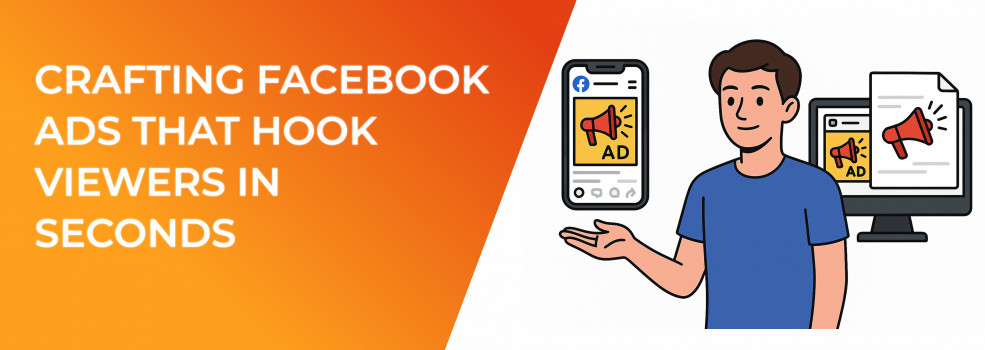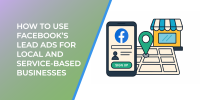Scroll once, and hundreds of posts whiz past. On Facebook your ad has, at best, two seconds to earn a pause. That micro-moment decides whether you pay for ad impressions Facebook or score the click that drives revenue. Below is a battle-tested, human-first blueprint for building top performing Facebook ads that stop thumbs, spark curiosity, and move prospects down-funnel fast.
1. Start With the Numbers That Matter
Before you dive into creative, ground yourself in the metrics that actually predict profit. The quick reference below pairs the numbers with the feed moments they diagnose; read it once, bookmark it forever.
Pro tip: Compare your Facebook ads performance to competitor benchmarks every week and log the trends, small shifts often foreshadow big gains or losses.
Want a deeper dive into industry CTR norms? Check out the latest benchmarks in What’s the Average Click-Through Rate for Facebook Ads in 2025?.
2. Build Scroll-Stopping Creative
Most feeds are a blur of sameness, so your creative must punch above its weight. Use the four-step checklist below, then test relentlessly until click through rate Facebook ads climbs past your baseline.
-
Lead with motion. Short, caption-ready video loops make the feed feel broken if users do not stop.
-
Show benefit in frame 1. Instead of lifestyle fluff, display the result—think brighter smile, tidier desk, or lightning-fast dashboard.
-
Frame for mobile first. The 4:5 vertical ratio dominates screen real estate and routinely boosts Facebook ad performance metrics.
-
Contrast, not clutter. One focal point outperforms multi-panel collages in every creative test, no matter the niche.
Need fresh visuals fast? Tap the tools in The Best AI Text and Image Generators in 2024 to spin up scroll-stopping creative without hiring extra designers.
Feeling stuck? Reverse-engineer five to ten best performing Facebook ads in your industry. Look at color palettes, hook lines, and calls to action. Borrow the structure; supply your own story.
3. Write Copy That Earns the Click
Ad text is a conversation, not a billboard. Keep the structure simple, yet packed with language the algorithm already associates with intent.
-
Hook: Name the pain (“Your CRM shouldn’t feel like a second job.”)
-
Value prop: Offer relief in one breath (“Automate follow-ups in 60 seconds, no coding.”)
-
Proof: Social count, micro-case, or stat (“Trusted by 12k+ SaaS teams.”)
-
CTA: Obvious next step (“Start free trial.”)
Sprinkle in high-intent phrases like “Facebook ad optimization,” “Facebook ads advice,” “landing page on Facebook,” “optimize Facebook ads for conversions” so Meta’s matching engine knows exactly where to send your spend.
4. Nail the Technical Setup
Creative wins attention, but configuration converts it. Read the overview below to orient yourself, then move through the bullet list in order. Follow each point faithfully and you will exit the dreaded learning phase faster, stretch budget further, and prevent the “why are my Facebook ads not working?” panic.
-
Create pixel on Facebook the minute you open Ads Manager. That tiny script trains campaigns quicker than any manual targeting trick.
-
Verify that pixel ads Facebook events (ViewContent, AddToCart, Purchase) are firing before you launch spend.
-
Exit the learning phase by aiming for 50 tracked events; use campaign budget optimization or the newer advantage campaign budget feature to concentrate delivery.
Stuck in limbo? Follow the steps in How to Finish the Facebook Learning Phase Quickly to stabilize delivery and lower costs. -
Match the optimization event to the funnel stage early. Toggling from Leads to Purchases mid-flight scrambles data and often triggers “learning limited” status.
-
Audit the full path weekly. High CTR but zero checkouts means a slow page, wonky form, or mismatched promise, not “bad traffic.”
-
Document every configuration change in a shared sheet. Clear versioning accelerates future ads analysis and keeps the entire team aligned.
Pixel-powered data feeds the algorithm and ends the learning phase faster.
Once this list is complete, circle back with fresh eyes. A single overlooked toggle can add dollars to cost per result Facebook ads faster than you can say “budget cap.”
5. Iterate Like a Scientist
Too many brands treat creative refreshes as guesswork. Act like a lab tech instead.
-
Set one hypothesis at a time. For instance, “Will a one-word headline lift CTR by 15%?”
-
Run split tests for three to five days or until you log 50 conversions. Shorter windows skew data; longer ones waste money.
-
Ignore vanity spikes. A flashy 8% CTR is worthless if purchases crater. Pair every shiny metric with ROI Facebook ads and CPM.
-
Archive each round. A living library of hooks, images, and outcomes makes future Facebook ad performance gains faster and cheaper.
For a lab-tested framework on experiments, skim Key Strategies for Facebook Ad Testing.
When results flatline, revisit fundamentals. Are you solving real-time Facebook advertising problems users still feel, or chasing yesterday’s pain?
6. Scale Without Losing Your Edge
Scaling is a dance between budget and creative freshness. Repeat the rhythm below each month.
-
Broaden audiences slowly. Duplicate the ad set and lift spend by about 30 %. Anything steeper shocks delivery and wrecks average click through rate on Facebook ads.
Ready to push spend? Read The Science of Scaling Facebook Ads Without Killing Performance before you turn up the dial. -
Lean on Meta automation. Dynamic creative, automatic placements, and CAPI (Conversions API) often yield better returns than granular micromanagement.
-
Expand formats. Carousel, Reels, and Collection ads uncover conversion pockets algorithms find faster than humans.
-
Refresh every four to six weeks. Even hall-of-fame ads fatigue. New concepts keep engagement above the Facebook ads benchmark range and CPM in check.
7. When to Call in Reinforcements
Even the most diligent growth team eventually hits a wall where Facebook ads management becomes too complex to juggle alongside product launches and sales targets. That inflection point is the perfect time to consider outside help, whether that means an all-in-one SaaS tool, a boutique agency, or a seasoned freelancer.
Five red-flag signals you need backup
-
Rising CPC and falling CTR. If your average cost per click Facebook climbs month after month while average click through rate on Facebook ads slips, your account may need deeper structural fixes than a quick creative refresh.
-
Persistent “learning limited.” Campaigns trapped in the status for more than two weeks usually require fresh targeting logic or campaign budget optimization expertise you might not have in-house.
-
Scaling kills ROI. Doubling spend should not crater ROI Facebook ads. If it does, you need someone who can optimize bids, placements, and audiences at higher volumes.
-
Creative backlog keeps growing. A shortage of new video and static assets quickly erodes Facebook ads performance; a partner studio or automation platform can crank out variations fast.
-
Pixel data never matches sales. Discrepancies between Shopify, Stripe, or your CRM and the Events Manager dashboard point to tracking misfires that specialized dev teams fix in hours, not weeks.
Choosing the right partner
-
Self-serve SaaS: Modern Facebook ad optimization platforms automate rules, rotate creative, and surface insights 24/7. Perfect if you want to stay hands-on but need more leverage.
-
Boutique agencies: Ideal when you crave strategic guidance plus done-for-you execution. Vet them for niche experience, transparent reporting, and clear playbooks to optimize Facebook ads at scale.
-
Freelance consultants: Great for solving one gnarly issue, say advanced campaign budget optimization or catalog setup, without a long retainer.
Before signing anything, insist on:
-
Case studies showing uplift in Facebook ads performance for brands with budgets and funnels similar to yours.
-
A detailed 90-day roadmap outlining audit findings, test plans, and projected impact on cost per result Facebook ads.
-
Access to real-time dashboards so you can track Facebook ad metrics yourself instead of waiting for end-of-month PDFs.
When dashboards multiply, seasoned guidance turns data overload into decisive action.
Staying in the driver’s seat
Outsourcing does not mean abdicating ownership. Keep weekly stand-ups, review creative against brand voice, and continue learning how to optimize Facebook ads for conversions. When you pair expert horsepower with in-house vision, you maximize the leverage of every advertising dollar and keep your thumb-stopping magic alive even as budgets and targets grow.
For a 360-degree view of success metrics, bookmark How to Analyze Facebook Ad Performance Beyond CTR and CPC.
Final Thoughts
Hooking viewers in seconds is not magic; it is disciplined storytelling plus unflinching measurement. Follow these steps, keep an eye on the highlighted Facebook ad metrics, and your campaigns will graduate from attention grabbers to revenue engines, one thumb-stop at a time.

